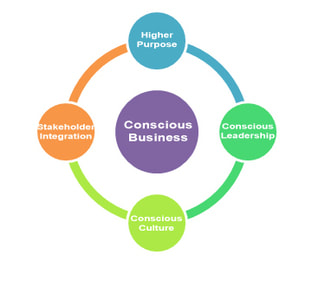|
Every leader thinks their organization’s culture is fine, just fine, maybe even superlative. Sometimes this perception is warranted and other times, not so much. Leaders can lose sight of their employee’s experience in the organization unless they purposely seek out worker’s opinions. In fact, recent studies show that power can inhibit empathy and change the way the brain perceives reality. Therefore, it’s easy for some leaders to become blind to signs that indicate a poor culture or even a toxic workplace.
There are several quantifiable signs that your culture and leadership style needs an overhaul. In this article, we’ll examine three common signs of a culture in trouble: high turnover, incivility, and unachieved strategic goals.
0 Comments
 What office doesn’t have a kitchen in it? It’s inconceivable to design a modern office without a special room or corner that holds a refrigerator, microwave and coffee pot. And that is because of the universal human desire to share food in a communal setting. For millennia, human beings have gathered around food for nurturance, conversation and community. Sharing food at a common table is such a basic human need that scientists give it a fancy name: “commensality”. Commensality has been shown to bond people together and to create intimacy that can’t be achieved in any other way. The act of sharing food is so powerful that leaders should consider how to use food routines to embed and symbolize their corporate culture. Usually when we think of building a positive company culture, we think of sharing noble ideas: values, vision, common purpose, goals, people policies and practices. These are intangible means to building a culture, appealing to team members’ hearts and mind. What about involving the physical body in symbols of a positive culture? If a leader really wants to embed a culture in team members, food is a vehicle to consider. Food ingested into the body becomes nutrition for cells, organs, bones and muscles. In addition, food is related in our experience to pleasure, nurturance, socialization and inclusion. In designing impactful routines that will bond a team and translate into symbols of the culture, food traditions are paramount.  A CEO once told me, “I don’t want my team just blowing sunshine at me all the time!” What she meant was that she wanted her leadership team to bring bad news to her early enough to do something about it. Trouble is, many executives squash bad news, either intentionally or unintentionally, by failing to encourage honest feedback or by punishing those who dare give it. The result? Poor business decisions due to narrow-minded perspectives. Surrounding oneself with only “yes men” or “yes women” can ruin a business. The demise of Merrill Lynch during the recent great recession is an example of a CEO who fired or refused to talk to executives in the firm who disagreed with his strategy. (See this NY Times article.) Merrill was acquired by Bank of America in 2008, in a shotgun marriage that ended a century-long existence of a once-venerated brokerage firm.  Conscious Capitalism is all about the heart and soul of a business. It is a movement that is gaining momentum and excitement in the business community, and should be foremost on the minds of family business leaders. Conscious Capitalism contrasts with traditional capitalism, whose sole purpose is to maximize shareholder (or owner) wealth. In Conscious Capitalism, the purpose of business is to advance the common good and to make decisions that benefit not just the owners or shareholders, but all the stakeholders of the business: employees, customers, shareholders/owners, suppliers & vendors, society and any other constituents that are affected by the business. If you think that talk about heart and soul of business is mushy, feel-good pablum, get this: Conscious businesses outperform the overall stock market by a ratio of more than 10:1 (Mackey, J. & Sosodia, R., 2014, p. 36). That means that Conscious Capitalism is a serious competitive advantage. It is a tough, business-minded, holistic approach to business that results in better financial performance.  “Consciousness precedes being... For this reason, the salvation of this human world lies nowhere else than in the human heart, in the human power to reflect, in human meekness and in human responsibility. Without a global revolution in the sphere of human consciousness, nothing will change for the better.” - Václav Havel, 1999 The greatest leadership thinkers are those who are concerned about the inner essence or consciousness of the leader, not the more visible leadership skills and competencies. Although leadership skills are very important, skills can be taught to and learned by almost anyone; who you are is unique and is the result of the work you’ve down on the inside. Inner work is the work of the soul, and it shapes your consciousness, the essence of who you really are. Leaders lead from who they are, not from their scholastic or business achievements. Who you are as a leader speaks louder than words and is projected on an imaginary screen for all your followers to see. They can see if you are true to your word; they can see if you react without fear and with a calm demeanor; they can see if you can articulate a 5-year vision rather than fixate on short term goals; they can see if you can respect and consider multiple perspectives. These qualities represent the inner consciousness of an effective leader. |
From the desk of
|
Our services |
Our Company |


 RSS Feed
RSS Feed

